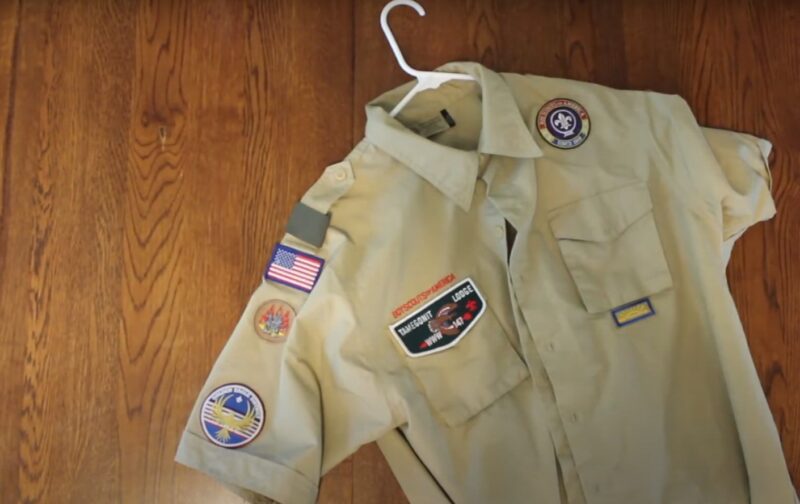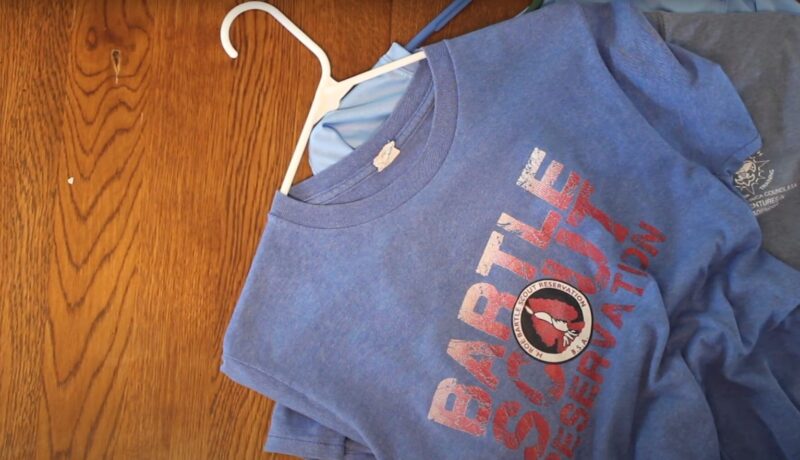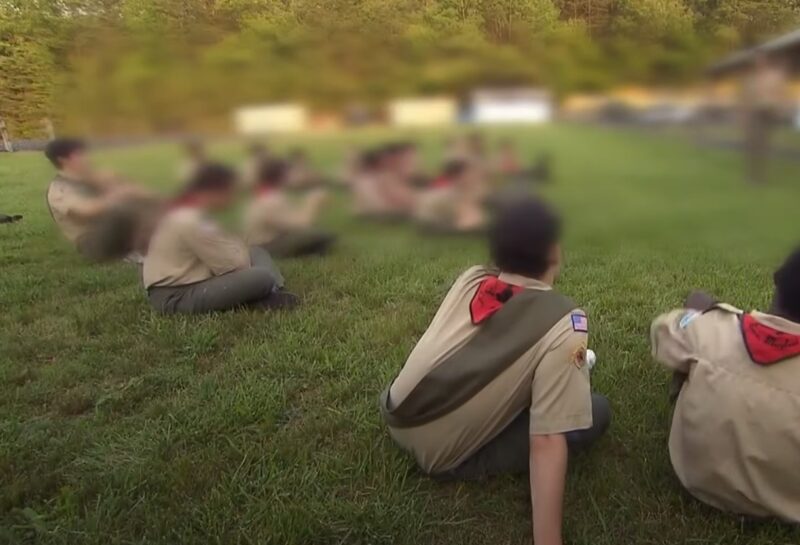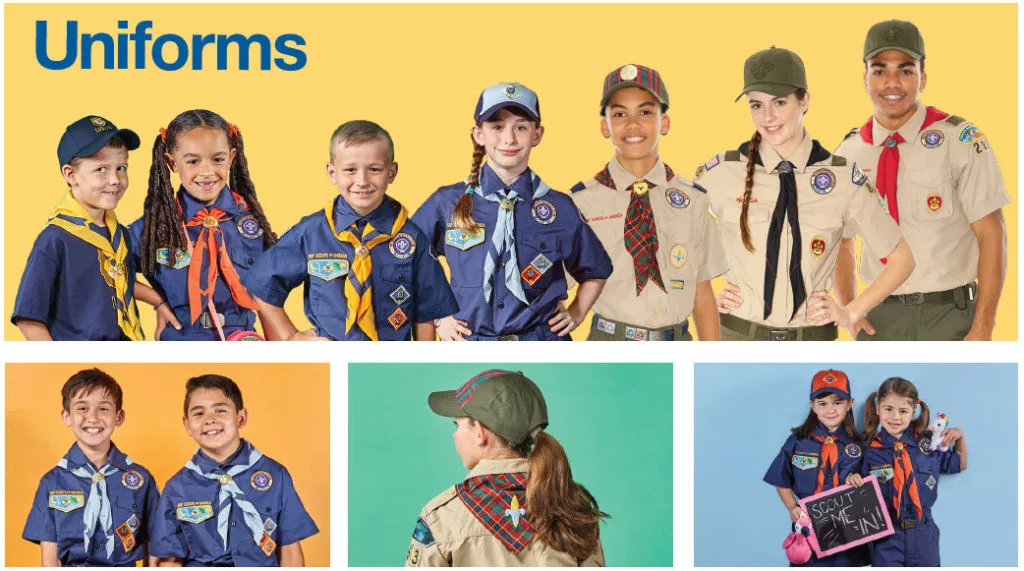Scouting is an adventure, a community, and a journey into the development of character and leadership. Central to this experience is the uniform, a symbol of unity and personal growth.
Within the scouting world, there are two primary categories of attire: Class A and Class B uniforms. This article delves into the intricate details and distinctions between these two types of uniforms, exploring their history, design, usage, and significance in the scouting movement.
The Historical Evolution of Scout Uniforms
The history of scout uniforms is a tale of evolution, adapting to the changing needs and times while maintaining core values. The inception of scouting at the start of the 20th century saw the introduction of a standard uniform. This uniform was more than just clothing; it was a symbol of equality and shared identity, transcending social and economic divisions.
Over the years, the scout uniform has undergone several changes, each reflecting the era’s practical needs and cultural influences.
| Era | Class A Uniform Evolution | Class B Uniform Evolution |
|---|---|---|
| Early 20th Century | Military-style attire, rooted in discipline and durability | Not yet introduced |
| Mid 20th Century | Modifications for increased comfort while maintaining formal appearance | Introduction as a casual alternative for active events |
| Late 20th Century | Further enhancements in comfort and adaptability | Improvements for better movement and fit during physical activities |
| 21st Century | Modern design focusing on adaptability and a distinct formal appearance | Modern, versatile design suitable for a wide range of activities |
Class A uniforms, often referred to as the “field uniform,” have their roots in the military-style attire of early scouts. This choice was not just for discipline; it provided a practical, durable solution for outdoor activities. The design has since evolved, prioritizing comfort and adaptability while retaining its distinct, formal appearance.
Class B uniforms, or “activity uniforms,” emerged as a more casual alternative. Designed for active, often physically demanding scouting events, these uniforms offered scouts freedom of movement and a relaxed fit, suitable for a wide range of activities.
Design and Components of Class A Uniforms

Class A uniforms are distinguished by their formal and structured design. This uniform typically includes a shirt, pants or shorts, a belt, a neckerchief with a slide, and sometimes a hat or cap. The shirt, often in a shade of tan or green, is adorned with various patches and insignia that denote the scout’s rank, achievements, and affiliations.
The design of Class A uniforms emphasizes a sense of formality and respect. The arrangement of patches and insignia on the uniform follows a specific guideline set by the scouting organization. This includes the placement of the American flag, council shoulder patches, unit numbers, and leadership positions.
The Relaxed Style of Class B Uniforms

In contrast, Class B uniforms are much less formal. Typically consisting of a scouting t-shirt and optional coordinating shorts or pants, these uniforms are designed for comfort and practicality. The t-shirt, often emblazoned with the scout troop’s logo or other scouting-related artwork, is the centerpiece of this uniform.
The relaxed style of Class B uniforms reflects the dynamic and active nature of many scouting activities. These uniforms are ideal for camping, hiking, community service projects, and other physical tasks where freedom of movement and comfort are paramount.
Usage and Appropriateness in Scouting Events

Knowing when to wear Class A versus Class B uniforms is a must in the scouting community. Class A uniforms are generally reserved for formal occasions, such as ceremonies, official meetings, and public appearances. These events often require a representation of scouting’s core values and traditions, for which the Class A uniform is perfectly suited.
Class B uniforms, on the other hand, are the go-to choice for most scouting activities that involve physical exertion or outdoor adventures. Their casual nature makes them suitable for situations where a formal appearance is not necessary or practical.
Class A Uniforms
Dos:
- Do wear Class A uniforms for formal occasions such as ceremonies, official meetings, court of honor, and public events like parades.
- Do ensure the uniform is complete and worn correctly, including all required insignia, patches, and accessories as per scouting guidelines.
- Do maintain the uniform in good condition, keeping it clean, pressed, and repaired as needed.
- Do respect the tradition and significance of the Class A uniform by wearing it with pride and dignity.
Don’ts:
- Don’t wear the Class A uniform for physical activities where it could be damaged or would be impractical.
- Don’t alter or customize the Class A uniform beyond the guidelines provided by the scouting organization.
- Don’t wear parts of the Class A uniform with casual clothes in a way that misrepresents the official scout image.
- Don’t neglect proper care and storage of the uniform, as it reflects on the scout’s respect for the organization.
Class B Uniforms
Dos:
- Do wear Class B uniforms for active and outdoor scouting activities where comfort and practicality are key, like camping, hiking, or service projects.
- Do choose appropriate Class B attire for the specific activity, ensuring it’s suitable for the physical demands and weather conditions.
- Do keep the Class B uniform clean and in good repair, showing respect for the scout identity even in a casual setting.
- Do use the Class B uniform to promote scouting spirit in a more relaxed and approachable manner during informal events.
Don’ts:
- Don’t wear the Class B uniform for formal scouting events where the Class A uniform is the appropriate attire.
- Don’t disregard the guidelines for Class B uniform such as inappropriate logos or designs that don’t align with scouting principles.
- Don’t wear Class B uniform in a way that undermines the scouting ethos – remember it still represents the scout organization.
- Don’t forget that even in Class B, scouts are ambassadors of the scouting movement, and their appearance should reflect its values and standards.
Significance and Impact on Scouting Identity

The significance of scout uniforms, both Class A and Class B, extends beyond their physical appearance. These uniforms foster a sense of belonging and pride among scouts. Wearing the uniform is a reminder of the scout’s commitment to the values and principles of the scouting movement, including leadership, community service, and personal growth.
The distinction between Class A and Class B uniforms also instills an understanding of appropriateness and respect. Scouts learn to discern the suitable attire for different occasions, an essential skill in both scouting and everyday life.
FAQs
Are there specific footwear guidelines for Class A and Class B uniforms?
Yes, there are footwear guidelines. For Class A uniforms, scouts are typically required to wear dark, closed-toe shoes or boots that are clean and in good condition. For Class B uniforms, the requirements are usually more relaxed, allowing for sturdy, comfortable footwear suitable for active outdoor activities, such as hiking boots or sports shoes.
How do scouts transition between Class A and Class B uniforms during events?
During events where both uniforms might be required, such as a camporee with both formal ceremonies and active outdoor activities, scouts often bring both uniforms. They change as needed based on the schedule and type of activity. Planning and preparation are key to ensure a smooth transition between uniforms.
Can Scouts personalize their Class A or Class B uniforms in any way?
Personalization of scout uniforms is generally limited to maintain uniformity and the official appearance. However, scouts can add certain approved pins, merit badges, or other insignia that represent their achievements or special designations. It’s important to follow the guidelines provided by the scouting organization for any additions to the uniform.
Are there different Class A or Class B uniforms for different climates or seasons?
Yes, many scouting organizations offer seasonal variations of the uniforms. For colder weather, long-sleeved Class A shirts and additional layers like sweaters or jackets that adhere to uniform standards are available. For Class B, layering with scouting-appropriate apparel is common. In warmer climates or seasons, lighter materials and short-sleeved options are often used.
How are Class A and Class B uniforms maintained and cared for?
Uniform maintenance is important for both Class A and Class B. Class A uniforms, being more formal, often require regular ironing, proper laundering, and careful storage to maintain their appearance. Class B uniforms are usually made of more durable, easy-care materials but should still be kept clean and in good repair to uphold the scouting principles of respect and preparedness.
Can scouts wear Class B uniforms to non-scouting public events as casual wear?
Generally, scouts are encouraged to wear their Class B uniforms primarily for scouting events. Wearing the uniform in public, outside of scouting activities, should be done considering the image it presents of the scouting organization. It’s always best to check with troop leaders or scouting guidelines for specific policies regarding wearing the uniform in public non-scouting contexts.
Final Words
In conclusion, the Class A and Class B scout uniforms are more than just attire; they are an integral part of the scouting experience. Each type of uniform serves a specific purpose, reflecting the multifaceted nature of scouting activities. From the formal, tradition-rich Class A uniform to the practical, activity-ready Class B attire, these uniforms play a pivotal role in shaping the identity and values of scouts.
As scouts don their uniforms, they wear a symbol of their journey, achievements, and the enduring spirit of the scouting movement. Whether in a formal Class A uniform or a relaxed Class B outfit, scouts across the world stand united in their commitment to make the world a better place. The uniforms are not just about conformity; they are about unity in diversity, shared experiences, and the collective journey of growth and learning.
